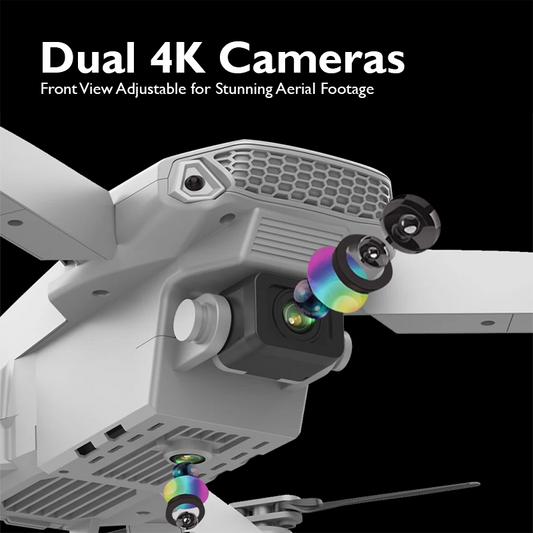The Role of Drones in Urban Green Belt Monitoring

In the ever-evolving landscape of urban development, preserving green spaces is becoming increasingly vital. These green belts serve as lungs for bustling cities, offering environmental, social, and economic benefits. However, keeping track of their health and integrity amidst rapid urbanization poses significant challenges. Enter drones – the innovative aerial technology revolutionizing urban green belt monitoring. In this article, we'll delve into the indispensable role drones play in safeguarding these essential natural habitats.
1. Understanding Urban Green Belts

Urban green belts are stretches of land designated for conservation within or around urban areas. They serve multifaceted purposes, including biodiversity preservation, flood prevention, recreational spaces, and enhancing overall urban quality of life. These green spaces mitigate the urban heat island effect, filter air pollutants, and provide habitats for various flora and fauna.
2.The Challenges of Monitoring Urban Green Belts

Monitoring these green belts manually can be labor-intensive, time-consuming, and costly. Traditional methods often involve ground surveys, satellite imaging, and manned aircraft, which have limitations such as restricted access to certain areas, low resolution, and high operational expenses. Moreover, with urbanization accelerating at an unprecedented pace, there's a pressing need for efficient, scalable monitoring solutions.
3. Enter Drones: Transforming Green Belt Monitoring

Drones, also known as Unmanned Aerial Vehicles (UAVs), have emerged as a game-changer in the realm of environmental monitoring. These small, remotely operated aircraft equipped with high-resolution cameras, sensors, and GPS technology offer unparalleled advantages in surveying vast and inaccessible terrains.
i. Precision Imaging: Drones capture high-resolution aerial imagery, enabling detailed analysis of green belt vegetation, land use patterns, and ecosystem dynamics. This precise imaging facilitates the detection of changes over time, such as deforestation, encroachment, or habitat loss, allowing authorities to take timely conservation measures.
ii. Cost-Effectiveness: Compared to traditional monitoring methods, drones offer significant cost savings. They require minimal manpower and can cover large areas in a fraction of the time, reducing operational expenses associated with ground surveys or manned flights. This cost-effectiveness makes drone technology accessible to a wider range of organizations and government agencies involved in green belt management.
iii. Real-Time Monitoring: Drones provide real-time monitoring capabilities, allowing instant access to critical environmental data. With live video streaming and onboard sensors, environmental scientists and conservationists can monitor changes as they occur, enabling rapid response to emerging threats such as wildfires, illegal logging, or invasive species infestation.
iv. Accessibility and Safety: Unlike manned aircraft or ground surveys, drones can access remote or hazardous terrain with ease. They navigate through dense vegetation, rugged terrain, and inaccessible areas, providing comprehensive coverage of the green belt ecosystem. This accessibility enhances safety by minimizing human exposure to potential hazards and reducing the need for risky fieldwork.
v. Data Analytics and Insights: The data collected by drones isn't just limited to imagery; it includes a wealth of spatial information that can be processed using advanced analytics tools. Machine learning algorithms analyze drone imagery to identify vegetation types, assess biodiversity, and map habitat distribution. These insights inform evidence-based decision-making and adaptive management strategies for green belt conservation.
4. Case Studies: Drones in Action

Numerous case studies worldwide demonstrate the effectiveness of drones in urban green belt monitoring:
a. In Singapore

Drones equipped with LiDAR technology are used to monitor the health of the city-state's extensive green infrastructure, including parks, nature reserves, and roadside vegetation. The data collected helps urban planners optimize green space management and enhance urban resilience.
b. In the United States

The National Park Service utilizes drones to monitor and manage protected areas such as Yellowstone National Park. Drones assist in wildlife monitoring, invasive species detection, and wildfire risk assessment, contributing to the preservation of these iconic landscapes.
c. In Brazil

Drones are employed in the Amazon rainforest to combat illegal logging and deforestation. Conservation organizations use drones to surveil remote areas, detect deforestation activities, and gather evidence for law enforcement actions, bolstering efforts to protect one of the world's most biodiverse ecosystems.
5. Regulatory Considerations and Ethical Implications
While drones offer immense potential for green belt monitoring, their use raises important regulatory and ethical considerations. Privacy concerns, airspace regulations, and data security issues must be addressed to ensure responsible drone operations. Additionally, stakeholders should engage local communities and indigenous populations in decision-making processes to respect cultural sensitivities and traditional land rights.
6. The Future of Green Belt Monitoring

As technology continues to advance, the capabilities of drones in urban green belt monitoring will only expand. Integration with artificial intelligence, satellite imagery, and Internet of Things (IoT) sensors will enable more sophisticated data analysis and predictive modeling. Furthermore, collaborative efforts between governments, academia, industry, and civil society are essential to harnessing the full potential of drone technology for sustainable urban development.
In the quest to preserve and sustainably manage urban green belts, drones emerge as indispensable tools for environmental monitoring and conservation. Their precision, efficiency, and versatility empower stakeholders to safeguard these vital green spaces against threats posed by urbanization, climate change, and human activities. By embracing drone technology and leveraging its capabilities, we can ensure the resilience and vitality of urban ecosystems for generations to come.
Explore a variety of drones at our online drone store.Happy Flying!











